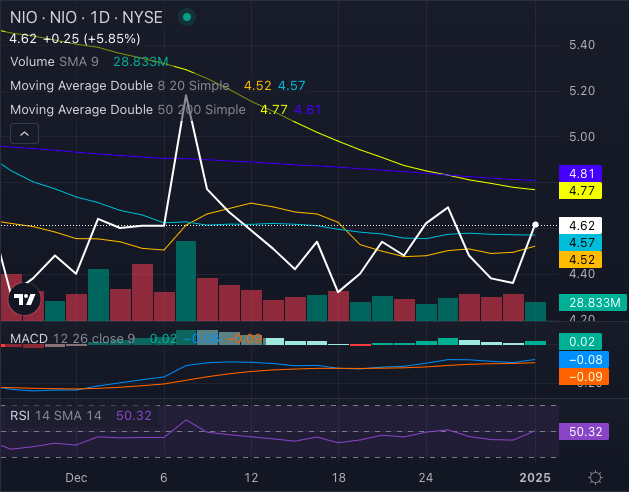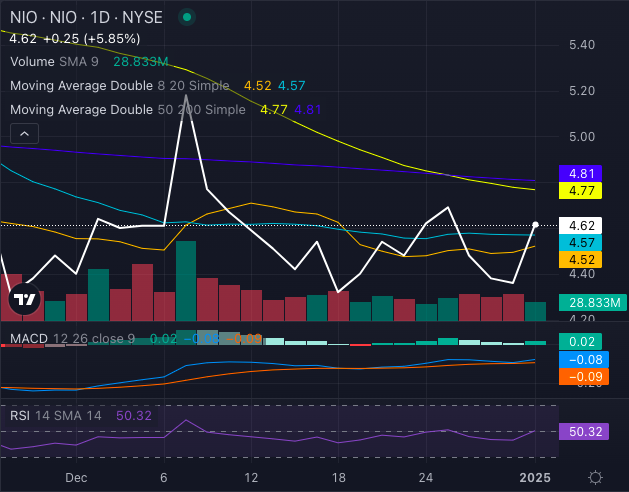Nio Inc. NIO finished 2024 strong, delivering a record 31,138 vehicles in December — a remarkable 72.9% increase compared to the same month last year.
For the quarter, deliveries reached an unprecedented 72,689 units, and annual deliveries totaled 221,970, an impressive rise of 38.7% from 2023.
However, the situation with Nio’s stock isn’t as optimistic.

Chart created using Benzinga Pro
Nio’s stock has encountered a worrying Death Cross — a bearish sign where the 50-day moving average falls below the 200-day moving average. Despite posting a gain of 7.57% earlier on Thursday’s trading and seeing a 6.59% increase for the month, the overall trend for NIO remains discouraging.
At $4.62 per share, the stock finds itself below both medium- and long-term moving averages, indicating ongoing selling pressure.
Read Also: EV Price War Heats Up As Chinese Automakers Extend Subsidies: Details
Understanding the Contradictions
Delivery figures suggest growth for Nio, yet technical indicators tell a different story. The company’s Relative Strength Index (RSI) is currently at 50.32, indicating slight bearish momentum, while the Moving Average Convergence Divergence (MACD) stands at negative 0.1, which also suggests a bearish outlook.
Such signs raise questions about Nio’s ability to maintain its current upward trend or if it will see further declines.
Looking Ahead
Nio has ambitious plans in the pipeline, such as launching its high-end ET9 model and introducing the Firefly brand in early 2025 to drive long-term growth.
However, with the stock down 44.3% over the past year, investors are hoping for a solid breakthrough above critical resistance levels to regain their confidence in the company.
The Death Cross gives cause for caution at this moment. Still, with strong delivery momentum and innovative products on the horizon, Nio might surprise its skeptics. For now, market participants are eager to see whether bulls or bears will chart the course ahead.
Read Next:
Image: Shutterstock
Market News and Data brought to you by Benzinga APIs

